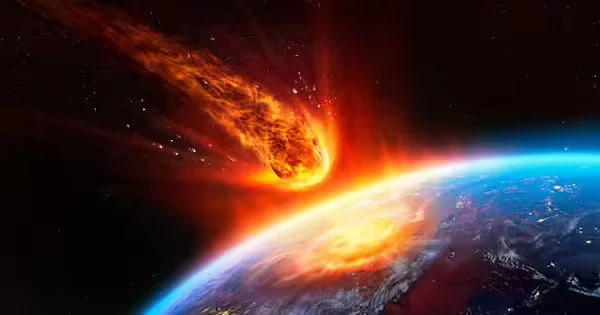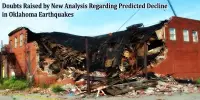New research has provided the most conclusive evidence yet that Earth’s continents were formed by massive meteorite impacts, which were especially common during the first billion years or so of our planet’s four-and-a-half-billion-year history.
Curtin University research has provided the strongest evidence yet that Earth’s continents were formed by massive meteorite impacts that were especially common during the first billion years or so of our planet’s four-and-a-half-billion-year history.
Meteorite fragments have been discovered all over the planet, with the majority discovered in Antarctica. They are easily seen on the snow-covered surface of Antarctica or embedded in ice.
The impact of meteorites on the Earth’s surface is part of the Earth’s ongoing process of accretion from space dust and rock. When these rock fragments get close enough to the Earth to be drawn in by its gravity, they may fall to become a part of it. As we will see, collisions with these space objects have most likely influenced the evolution of life on Earth, and such collisions may continue to do so in the future.
Our findings provide the first solid evidence that the processes that eventually formed the continents began with massive meteorite impacts similar to those responsible for dinosaur extinction, but billions of years earlier.
Dr. Tim Johnson
Dr. Tim Johnson of Curtin’s School of Earth and Planetary Sciences said the theory that continents formed at the sites of massive meteorite impacts had been around for decades, but there had been little solid evidence to support it until now.
“We discovered evidence of these giant meteorite impacts by examining tiny crystals of the mineral zircon in rocks from the Pilbara Craton in Western Australia, which represents Earth’s best-preserved remnant of ancient crust,” Dr. Johnson said.
“Studying the composition of oxygen isotopes in these zircon crystals revealed a ‘top-down’ process starting with the melting of rocks near the surface and progressing deeper, consistent with the geological effect of giant meteorite impacts.

An impact event occurs when two astronomical objects collide, causing measurable effects. Impact events have physical consequences and have been observed to occur on a regular basis in planetary systems, though the most common involve asteroids, comets, or meteoroids and have little impact. When large objects collide with terrestrial planets like Earth, the physical and biospheric consequences can be severe, though atmospheres mitigate many surface impacts through atmospheric entry. Impact craters and structures dominate many of the Solar System’s solid objects and provide the most empirical evidence for their frequency and scale.
“Our findings provide the first solid evidence that the processes that eventually formed the continents began with massive meteorite impacts similar to those responsible for dinosaur extinction, but billions of years earlier.”
Understanding the formation and ongoing evolution of the Earth’s continents, according to Dr. Johnson, is critical because these landmasses contain the majority of the planet’s biomass, all humans, and nearly all of the planet’s important mineral deposits.
“Not least, the continents host critical metals such as lithium, tin, and nickel, commodities that are essential to the emerging green technologies needed to fulfil our obligation to mitigate climate change,” Dr. Johnson said.
“These mineral deposits are the result of a process known as crustal differentiation, which began with the formation of the first landmasses, of which the Pilbara Craton is only one. Data from other areas of Earth’s ancient continental crust appear to show patterns similar to those observed in Western Australia. We’d like to put our findings to the test on these ancient rocks to see if, as we suspect, our model is more general.”
Dr. Johnson is a member of Curtin’s flagship earth sciences research institute, The Institute for Geoscience Research (TIGeR).
















